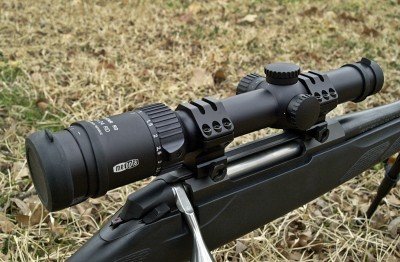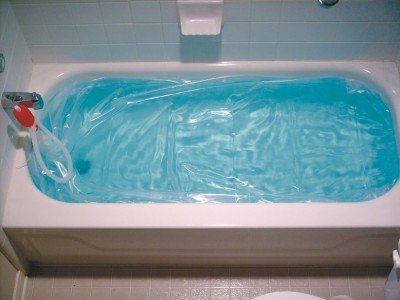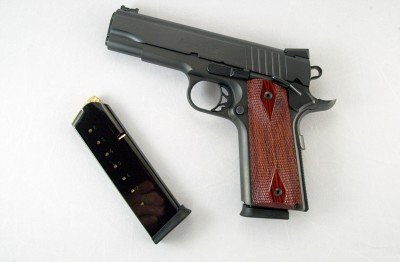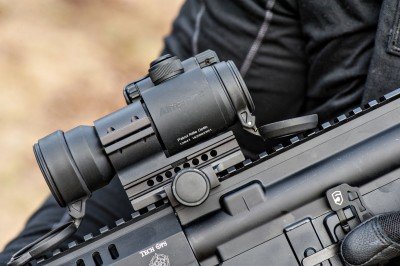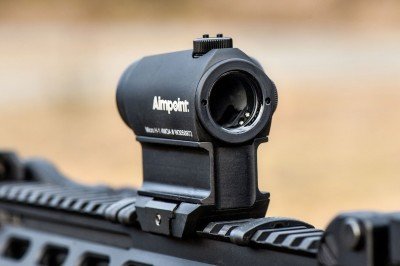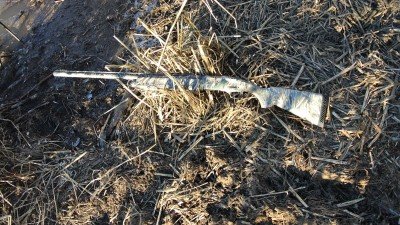Food is the one thing you don’t have to tell anyone to prep for when it comes to long term survival. Everyone knows you have to eat. But the misconceptions come when you compare the differences between “homesteading” and “prepping.” A traditional healthy American home keeps a good-sized pantry of food historically, though this practice has fallen away in recent times of plenty. A homestead-style pantry contains either home or store-canned food, along with some basic grains and rice and flour. Homesteading isn’t prepping for the breakdown of society. Neither is planning for one month of Mylar packet survival meals, or even one year of meals. As I said in the first installment of this series, you really have to decide to be one of the crazies, then do the best you can.
Search: used market
Show First
Walther PPK/S .22LR Pistol—New Gun Review
So here is the conundrum about the PPK/S .22LR: it is not a plinking, practice or analog trainer for the .380 ACP chambered brothers. Instead, the PPK/S .22LR, in stock configuration, is really only good for one thing: defensive use for the recoil sensitive. I can hear it now, “Are you nuts, a .22LR for defense?”, “Why would anyone buy this?”… etc. Well, there is a market for new shooters who believe the recoil of the .380 ACP is still too much to handle, so Walther has this option. Personally, I would never use or recommend a .22LR for self defense, however for some, it is the only acceptable option in terms of comfort. With those limitations in mind, the Walther .22LR would be an excellent recommendation and offer a perfect transition to the .380 ACP model as soon as the shooter begins to become comfortable with firearms.
Meopta MeoStar R2 1-6×24 RD Riflescope Hits it Over the Fence
Thanks to modern manufacturing processes, today’s rifles have accuracies of one to two minutes of angle right out of the box. However, if you want to realize that potential, you’ll need a scope that’s in the same ballpark. The hard part, of course, is deciding which of the multitude of scopes in the marketplace is best for you. After all, they all look pretty much the same. But when you look a little closer, the differences begin to emerge. I don’t generally get too excited about scopes, but as an astronomy buff and licensed optician, when I get to use an optical instrument of this caliber, it’s hard not to get excited.
Meopta, an American family-owned, multinational company with headquarters in the US, has been building scopes since 1933. Although the company is not well known here, you’ve certainly heard of some of the premium scope makers it has built scopes for. The point is, Meopta has a lot of experience manufacturing top-of-the-line scopes.
Prepping 101: Water Storage, Purification, Filtration & Winter
Water is the most crucial and diverse aspect of preparing for the breakdown of our society. Where do you get your water now? Is it from the city? Is it from an artesian well? A shallow well? Do you have lakes or streams near your house? Are those your sense of water security? Is your swimming pool an ever-available water backup? All of these pieces mesh into a fairly large body of possibilities, and points of failure. Those points of failure are what we most need to talk about. Once you understand the issues, and the types of methods to resolve them, water gets much simpler. The bad news is that if you live in a tightly packed area, or an apartment, you may have to make a decision now that eventually abandoning your home is mandatory (but not right away). Depending on where you live, your water issues may be complete scarcity, pollution, feast or famine seasonal rain and droughts, deep freezes and even deadly bacteria and viruses in the water. There are ways you can prepare for all of these potential problems, for both the short and long term.
Colt M2012 Bolt Rifle – Cooper Arms of Montana
Colt’s Manufacturing has a long history of working with other gun companies for Colt-branded bolt action rifles. The Colt Sauer rifle was produced by J.P. Sauer & Son in Germany from 1973 to 1984, and the 27,189 rifles that came out of it are still highly sought after by collectors. These days, Colt has updated itsgame with an American company called Cooper Firearms of Montana. Cooper was started in 1990 by ex-Kimber employees and has beena staple in the custom rifle market for more than two decades. The first Colt/Cooper came out a couple years back, called the M2012. They still make it today, and as you can see from the picture here, it looks like what it is, a high-end tactical rifle meant to look tactical. Since the introduction of the M2012, a lot of high-end shooters, especially ex-military snipers, have said that they would love a Cooper rifle that says Colt on the side (who wouldn’t?), but that what they would have in mind was something more along the lines of a US Army issue M24 or USMC M40. Colt, and Cooper, have listened, and the result is a whole new version of the M2012 that more resembles those rifles, while sacrificing nothing in performance. These rifles aren’t cheap. Our test gun as you see it here retails for $3,195. But as you will see, it is well within the world class division when it comes to bolt guns. If you are a Colt fan who just loves to see that name on the side of your gun, like back in the old Sauer days, or you are just in the market for an extremely thoughtful and well-made long range rifle, look no further than the new Colt Model 2012.
Para 1911 Elite Commander—Gun Review
The model 1911 pistol has been in demand for more than 100 years. That should tell you something about its design and capabilities. It was the official sidearm of the US Army from 1911 until 1985, when the Beretta 92F was adopted. The 1911 is still in use by elite units, however, like the Army Delta Force, Marine Special Operations Command and the 1st Special Forces Operational Detachment. These are the best of the best, who use their firearms in the most demanding situations. Buying a 1911 puts you in some very good company. If you happen to be interested in acquiring a quality 1911 at a value price, the Para Elite Commander deserves a look. When I say “value” price, I don’t mean the cheapest 1911 available. There are plenty around for less money. In fact, Para even has a line with a lower price-point. What I mean by “value” is a 1911 with all the enhancements you’d want for top accuracy and consistently dependable operation, at a reasonable price. The Para fits that bill. There’s even a way for you to save an extra hundred bucks off of the best price you can negotiate with your dealer. Read on to learn how.
Aimpoint PRO—Advanced Technology and Durability
Introduced at SHOT Show 2011, the Aimpoint Patrol Rifle Optic (PRO) entered the competitive red dot market with a host of features designed specifically for the Law Enforcement Officer (LEO). Aimpoint, which has been in the red dot business since 1974, took its years of experience as well as input from LEO professionals to create an optic that is optimized for the LEO mission field and the LEO wallet. The features of the PRO are vast, and while Aimpoint has other red dot optics in its product inventory that may appear comparable, none could match the MSRP of $440.
The catch, at the time, was it was specifically made for LEO and could only be bought from an authorized Aimpoint Dealer. Of course with that kind of price point for a top-notch optic, everyone wanted to get his hands on one (or four). The general public was initially frustrated by the lack of availability, but Aimpoint wanted to make sure the LEO community was the first to get the PRO. Some civilians (like me) were able to get the PRO from other sources a few months down the road, but pickings were slim and disappeared very quickly. Eventually, like everything, the mystique of the optic and its “unobtainable” status faded away. Aimpoint now offers the PRO as part of its commercial line, available to the American shooting public. Even as we enter 2014, the Aimpoint Patrol Optic is still one of the most affordable, well-rounded and robust red dots on the market. I have used red dot optics that are lighter and smaller, but for my money it is hard to beat the PRO for what you get.
Aimpoint Micro H-1 Review
In 2007, Aimpoint set the bar high for the micro red dot sight (MRD), which was then new to the market. Until then, military grade red dot sights were fairly large, consisting of a wide 30mm tube with a battery compartment slung off the side. While very effective in combat and in the civilian hunting and shooting sports, they added bulk and weight to the firearm. This proved cumbersome, especially for competition shooters mounting red dots to their pistols. When Aimpoint launched its Micro Red Dot series, it took all the reliability, durability and long battery life of its proven larger red dots and crammed it into a small, light-weight package.
Originally Aimpoint had three micro models, the T-1, H-1 and R-1. All three shared the same physical dimensions, weight and operating controls, but they were intended for different applications. The T-1 was designed primarily for a military and law enforcement application, while the H-1 and R-1 were intended for the American hunter and competition shooter respectively. As the R-1 has been discontinued and the primary difference from the H-1 is the color (silver instead of black), this article will only address the T-1 and the H-1. The different specifications between the T-1 and the H-1 are their availability of night vision settings, operating temperature ranges, water resistance and color. The military and Law Enforcement T-1 has four night vision settings and is rated for operation in -50 to 160 degrees Fahrenheit. It is also submersible to 80 feet. These extra features come at a premium, and the T-1 commands a higher price point than the H-1. The H-1 looks like the more expensive T-1, but it lacks the night vision settings, has an operating temperature range of -20 to 140 degrees Fahrenheit and is only submersible to 15 feet. The H-1 also has more distinct manufacture and product markings than the T-1.
The New Mossberg Duck Commander Line: Duck Guns Worthy of Duck Dynasty
The popularity of the A&E reality show Duck Dynasty has done wonders to increase the public’s awareness of duck hunting. Mossberg, making the most of this opportunity, announced this past summer that it had teamed up with the Duck Commander guys to create a new line of products. These interpretations of venerable Mossberg guns are starting to trickle out of the factory. We talked to Mossberg reps at SHOT Show this year and they agreed to send us a Duck Commander 930, which we had in the field before the end of duck season (just a week later). What better way to check out a gun that is designed to knock waterfowl out of the sky than to take it to the blind?
Prepping 101 Series Intro – The Stigma of Being a Prepper
It is easy to get lost in our world of technology and abundance. Every time I turn on the water tap in my home, water comes out. Every time I go to the grocery store, the shelves are full of food. The store clerk accepts either a plastic card from me in exchange for my food, or provide some combination of paper (actually cloth) currency. The lights in my home turn on when I flip the switch, and I can turn on the TV or use my computer to find out what is going on in the world anytime I want. And though I carry a gun every day (living in Miami I would be a fool not to), I don’t expect to ever have to use it to protect my family and belongings. I also have fuel to cook my food and if I get hurt I can go to the hospital and get fixed up right quick. All of this I fully expect to go on indefinitely, and probably to get even easier as time moves endlessly forward. I have been conditioned to believe that I will never have to live life without these “entitlements” (for lack of a better word), and if I question this assumption, I’m a paranoid nut.


